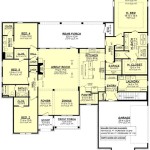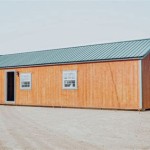House plans for 2000 sq ft are detailed blueprints that provide a comprehensive guide for the construction of a home with a specific square footage. These plans typically include floor plans, elevations, sections, and construction details, ensuring that the home is built according to specific specifications. For instance, a house plan for a 2000 sq ft home might include a detailed layout of the rooms, including the kitchen, living room, bedrooms, and bathrooms.
They serve as a roadmap for the construction process, providing guidance to architects, contractors, and builders throughout the project. House plans for 2000 sq ft are particularly valuable for homeowners who want to customize their homes to fit their specific needs and preferences.
In this article, we will delve into the nuances of house plans for 2000 sq ft, exploring their components, benefits, and considerations for homeowners embarking on a building project. We will also provide practical tips and insights to help you navigate the process of choosing and implementing a house plan that meets your unique requirements.
When considering house plans for 2000 sq ft, it is essential to keep certain key points in mind:
- Define room sizes
- Consider flow and function
- Plan for storage
- Maximize natural light
- Choose energy-efficient features
- Consider outdoor living spaces
- Factor in future needs
- Set a budget
- Work with a professional
- Customize to your needs
By carefully considering these aspects, you can ensure that your 2000 sq ft home plan meets your specific requirements and provides a comfortable and functional living environment.
Define room sizes
Determining the appropriate size for each room in your 2000 sq ft home plan is crucial for ensuring comfort and functionality. Consider the following factors when defining room sizes:
- Number of occupants: The number of people living in the home will influence the size of the rooms. For instance, a family with children will require larger bedrooms and a more spacious living area compared to a single individual.
- Furniture and belongings: Take into account the furniture and belongings you plan to have in each room. Measure your existing furniture or estimate the size of the pieces you intend to purchase to ensure they fit comfortably within the designated space.
- Traffic flow: Consider how people will move through the home. Avoid creating rooms that are too cramped or congested. Ensure there is adequate space for movement and that doorways and hallways are wide enough for easy access.
- Natural light: Maximize natural light by planning for windows and doors that allow ample sunlight to enter each room. Natural light not only brightens the space but also reduces energy consumption.
By carefully defining room sizes, you can create a home that is comfortable, functional, and meets the specific needs of your family.
Consider flow and function
Create a seamless flow
When planning your 2000 sq ft home, consider how people will move through the space. Create a seamless flow between rooms by avoiding awkward transitions or dead-end spaces. Position rooms that are frequently used together, such as the kitchen and dining area, in close proximity to minimize unnecessary steps.
Define functional zones
Divide your home into functional zones to enhance the overall functionality of the space. For instance, designate a quiet zone for bedrooms and a separate zone for more active areas like the kitchen and living room. This separation allows for privacy and reduces noise levels in areas.
Maximize natural light
Natural light not only brightens the space but also reduces energy consumption. Plan for windows and doors that allow ample sunlight to enter each room. Consider the orientation of your home to take advantage of natural light throughout the day. Large windows or skylights can be incorporated to maximize the flow of natural light.
Incorporate storage solutions
Adequate storage is essential for maintaining a tidy and organized home. Include built-in storage solutions such as closets, cabinets, and shelves in your 2000 sq ft house plan. Utilize vertical space by installing tall cabinets or floating shelves. Consider multi-purpose furniture that combines storage with other functions, such as ottomans with built-in storage compartments.
Plan for storage
Maximize vertical space
Utilize vertical space by installing tall cabinets or floating shelves. These space-saving solutions allow you to store items without taking up valuable floor space. Consider floor-to-ceiling cabinets in the kitchen or pantry to maximize storage capacity. Floating shelves can be used in living areas, bedrooms, and bathrooms to display books, dcor, or other belongings.
Incorporate multi-purpose furniture
Choose furniture that combines storage with other functions to save space and maintain a clutter-free environment. Ottomans with built-in storage compartments can provide additional seating while offering a place to store blankets, pillows, or toys. Coffee tables with drawers or shelves can be used to store books, magazines, or other items. Beds with built-in drawers or trundle beds can provide extra storage for linens or seasonal items.
Utilize hidden storage areas
Incorporate hidden storage areas into your home design to maximize space utilization. Consider building shelves or cabinets behind walls or under stairs. Create pull-out drawers under beds or utilize the space under sinks for additional storage. These hidden storage solutions keep items out of sight while maintaining easy accessibility.
Plan for seasonal storage
Designate a specific area in your home for storing seasonal items, such as holiday decorations, sports equipment, or gardening tools. This dedicated space will prevent seasonal items from cluttering up other areas of your home. Consider using stackable bins or vacuum storage bags to maximize space utilization and protect items from dust or damage.
Maximize natural light
Incorporating ample natural light into your 2000 sq ft home plan offers numerous benefits, including reduced energy consumption, improved mood, and enhanced overall well-being. Here are some key strategies to maximize natural light in your home design:
- Position windows and doors strategically: Plan the placement of windows and doors to take advantage of natural light throughout the day. Orient your home to face south to capture maximum sunlight. Place windows on multiple walls of a room to allow light to enter from different angles.
- Choose large windows and doors: Opt for large windows and doors to allow more natural light to flood into your home. Consider floor-to-ceiling windows or sliding glass doors to create a seamless connection between your indoor and outdoor spaces.
- Utilize skylights and solar tubes: Skylights and solar tubes can be installed in areas with limited access to natural light, such as hallways, bathrooms, or interior rooms. These features allow you to bring natural light deep into your home.
- Use light-colored materials: Light-colored walls, ceilings, and flooring reflect natural light more effectively, making rooms appear brighter and more spacious. Avoid using dark or heavy materials that absorb light.
By maximizing natural light in your 2000 sq ft home plan, you can create a (bright and open space) that is both inviting and energy-efficient.
Choose energy-efficient features
Insulation
Proper insulation is crucial for maintaining a comfortable indoor temperature while reducing energy consumption. Choose insulation materials with high thermal resistance, such as fiberglass, cellulose, or spray foam. Ensure that all walls, ceilings, and floors are adequately insulated to prevent heat loss or gain.
Windows and doors
Windows and doors are major sources of energy loss in a home. Opt for energy-efficient windows and doors that are designed to minimize heat transfer. Look for windows with low U-factors and high solar heat gain coefficients (SHGC). Choose doors with weatherstripping and tight seals to prevent air leakage.
Appliances
Energy-efficient appliances can significantly reduce your energy consumption. When purchasing appliances, look for the Energy Star label, which indicates that the appliance meets specific energy efficiency standards. Energy-efficient appliances use less energy to perform the same tasks, saving you money on utility bills.
Lighting
Lighting accounts for a significant portion of household energy consumption. Replace traditional incandescent bulbs with energy-efficient LED or CFL bulbs. LED bulbs are particularly efficient and can last up to 50,000 hours, reducing the need for frequent replacements.
Consider outdoor living spaces
When planning your 2000 sq ft home, it is essential to consider outdoor living spaces to extend your living area and enhance your quality of life. By incorporating well-designed outdoor spaces, you can create a seamless connection between your indoor and outdoor environments, providing additional space for relaxation, entertainment, and activities.
- Patios and decks: Patios and decks are versatile outdoor living spaces that can be used for a variety of activities, from dining and entertaining to simply relaxing and enjoying the outdoors. Consider the size, shape, and materials of your patio or deck to ensure it complements your home and meets your needs.
- Porches and verandas: Porches and verandas are covered outdoor living spaces that offer protection from the elements while allowing you to enjoy the outdoors. They can be used for relaxing, reading, or simply taking in the views. Consider the orientation and size of your porch or veranda to maximize comfort and functionality.
- Outdoor kitchens: An outdoor kitchen is a great way to extend your living space and create a dedicated area for cooking and entertaining outdoors. Consider the appliances, counter space, and storage options you need to create a functional and enjoyable outdoor cooking experience.
- Fire pits and fireplaces: Fire pits and fireplaces provide warmth and ambiance to your outdoor living space, allowing you to enjoy the outdoors even on cooler evenings. Choose a fire pit or fireplace that fits the size and style of your outdoor space and provides a comfortable gathering area for friends and family.
By carefully considering your outdoor living spaces, you can create a home that seamlessly blends indoor and outdoor living, providing you with additional space to relax, entertain, and enjoy the outdoors.
Factor in future needs
When planning your 2000 sq ft home, it is essential to consider your future needs and how your lifestyle may change over time. By incorporating flexibility and adaptability into your home design, you can ensure that your home continues to meet your needs for years to come.
- Changing family dynamics: If you plan to start a family or have children who will eventually grow older, consider designing your home with additional bedrooms, bathrooms, or flexible spaces that can be adapted to changing needs. For example, a guest room could be designed to double as a nursery or a home office.
- Aging in place: If you plan to age in place, consider incorporating features that will support your independence and accessibility as you get older. This may include wider doorways, ramps, or accessible showers.
- Changing hobbies and interests: Your hobbies and interests may change over time, so it is important to design your home with spaces that can be easily adapted to different uses. For example, a spare room could be used as a home gym, craft room, or music room.
- Resale value: Consider the resale value of your home when making design decisions. Features that appeal to a wide range of buyers, such as open floor plans, energy efficiency, and outdoor living spaces, can increase the value of your home in the long run.
By carefully considering your future needs, you can create a home that is both functional and adaptable, ensuring that it continues to meet your needs and provide you with a comfortable and enjoyable living space for years to come.
Set a budget
Establishing a realistic budget is crucial before embarking on your 2000 sq ft home building project. This budget will serve as a financial roadmap, guiding your decision-making throughout the process. Here are key considerations when setting a budget:
- Land acquisition: If you do not already own land, factor in the cost of purchasing a suitable lot for your home. Land prices can vary significantly depending on location, size, and topography.
- Construction costs: This is the most substantial expense and includes materials, labor, permits, and inspections. Costs can vary based on the complexity of the design, materials used, and local labor rates.
- Architectural and engineering fees: Architects and engineers play a vital role in designing and ensuring the structural integrity of your home. Their fees typically range from 5% to 15% of the construction costs.
- Contingency fund: Unexpected expenses can arise during construction, so it is advisable to set aside a contingency fund of 10% to 15% of the total budget to cover unforeseen costs.
By carefully considering these factors and setting a realistic budget, you can avoid financial strain and ensure that your 2000 sq ft home building project stays on track.
Work with a professional
Collaborating with a professional is highly recommended when embarking on a 2000 sq ft home building project. A qualified architect or builder can provide invaluable expertise, ensuring that your vision is translated into a safe, functional, and aesthetically pleasing home.
- Expertise and experience: Architects and builders possess specialized knowledge and experience in designing and constructing homes. They can guide you through the complex process, ensuring that your home meets building codes, zoning regulations, and your specific requirements.
- Design and functionality: Professionals can create a customized design that aligns with your lifestyle and needs. They can optimize space utilization, incorporate energy-efficient features, and design a home that is both beautiful and functional.
- Cost management: Architects and builders can help you stay within your budget by providing accurate cost estimates and advising you on cost-saving measures. They can also assist with procurement and negotiate with contractors on your behalf.
- Construction supervision: During construction, a professional can oversee the project, ensuring that the work is completed according to the plans and specifications. They can address any issues that arise promptly, minimizing delays and ensuring quality.
Investing in the services of a qualified professional for your 2000 sq ft home building project can save you time, money, and stress in the long run. Their expertise and guidance will help you create a home that meets your unique needs and provides you with years of comfort and enjoyment.
Customize to your needs
When selecting a house plan for your 2000 sq ft home, customization is essential to ensure that the home aligns perfectly with your lifestyle, preferences, and specific requirements. Here are several key aspects to consider when customizing your house plan:
Layout and flow: The layout of your home should facilitate seamless movement and functionality. Consider the number of bedrooms and bathrooms you need, as well as the desired flow between different rooms. Open floor plans promote spaciousness and natural light, while more traditional layouts offer defined spaces for privacy and coziness.
Architectural style: Choose an architectural style that resonates with your aesthetic preferences and complements the surrounding environment. Popular styles for 2000 sq ft homes include modern farmhouse, craftsman, ranch, and contemporary. Each style offers unique characteristics, from rustic charm to sleek lines and open spaces.
Interior design: The interior design of your home should reflect your taste and personality. Select finishes, fixtures, and furnishings that create a cohesive and inviting atmosphere. Consider elements such as flooring, wall colors, lighting, and furniture to personalize your space and make it feel like home.
Special features: Incorporate special features that enhance your lifestyle and cater to your hobbies or interests. This could include a gourmet kitchen for culinary enthusiasts, a home theater for movie buffs, or a dedicated workshop for DIY projects. By tailoring your home to your specific needs and desires, you can create a truly unique and comfortable living space.
Customizing your house plan allows you to create a home that is not only aesthetically pleasing but also perfectly suited to your way of life. By carefully considering your requirements and preferences, you can design a space that meets your functional needs, reflects your personality, and provides a comfortable and enjoyable living environment for years to come.









Related Posts








